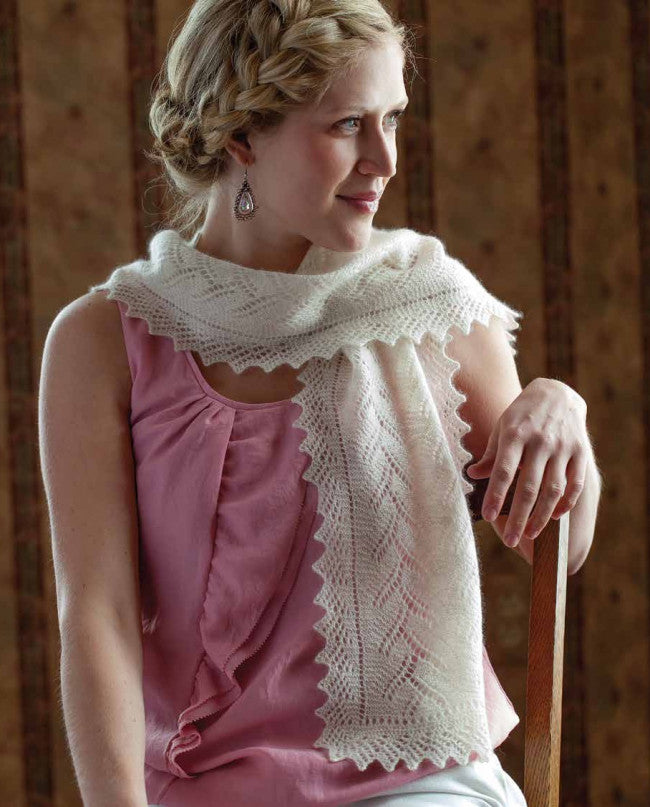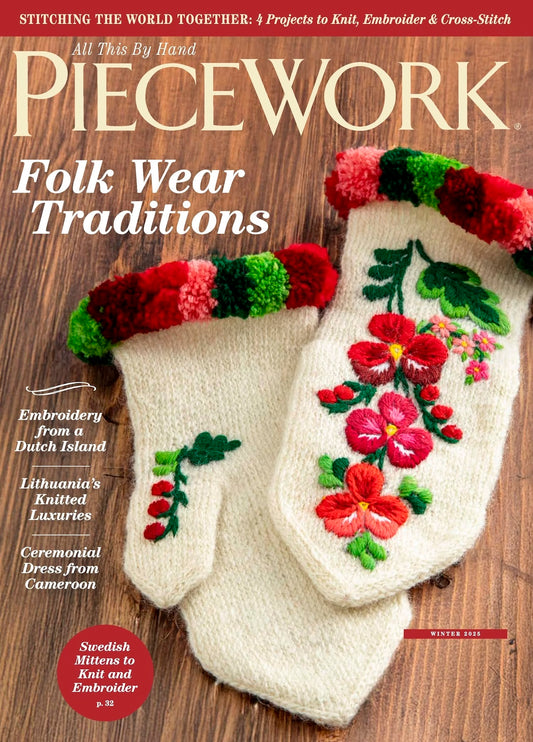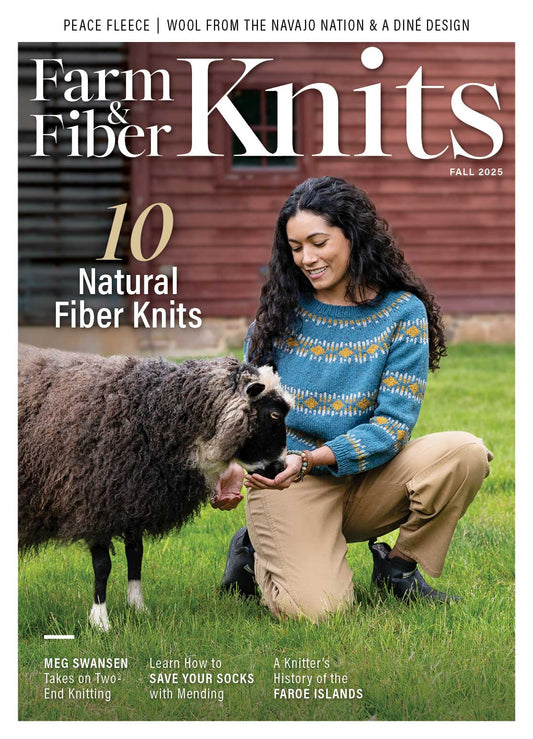Long Thread Media
Koloski (Ears-of-Wheat) Knitted Scarf Pattern
Couldn't load pickup availability
The Orenburg region of Russia shares a border with present-day Kazakhstan. During the Soviet era in the 1950s and 1960s, much of the steppe of Kazakhstan was developed as wheat fields to supply grain for the Soviet state, and as a result, many people relocated to work in the fields. Koloski (Ears-of-Wheat) symbols soon began to appear on posters, paintings, wallpaper, and even embroidered on blouses and dresses. Lace knitters of the region also took notice and adapted the Koloski pattern for use in their knitted shawls. By the 1970s, however, Koloski had fallen out of favor with many lace knitters: Olga A. Federova (1935-2008), then artistic director for the Orenburg Kombinat (Co-op), felt that the pattern did not meet the exacting symmetrical/geometric standards of the Kombinat.
I've always wanted to try this pattern, and fortunately, I have several lace pieces featuring it in my collection. Lacking written instructions, I knitted swatch after swatch to determine how the pattern was achieved. It turns out to be a combination of yarnovers, double yarnovers, and knit-two-togethers on a garter-stitch fabric. I do like this pattern, and I hope that you enjoy knitting Koloski as much as I did.
Finished Size: 11 inches (27.9 cm) wide and 64 inches (162.6 cm) long
Pattern Requirements: Windy Valley Muskox, 100% cashmere yarn, laceweight, 218 yards (199.3 m)/28.5 gram (1.0 oz)/ball, 3 balls of Natural White; windyvalleymuskox.net
Needles, size 1 (2.25 mm) or size needed to obtain gauge
Stitch holder
Stitch markers (2 different colors)
Tapestry needle
Fiber Fantasy Knitting Products Blocking Kit; woolstock.com
Gauge: 31 sts and 40 rows = 4 inches (10.2 cm) in main body patt
Originally Published: Knitting Traditions Fall 2013

New items
-
PieceWork Winter 2025
Regular price $9.99 USDRegular priceUnit price per -
Easy Weaving with Little Looms Winter 2025
Regular price $14.99 USDRegular priceUnit price per -
Farm & Fiber Knits Fall 2025
Regular price $14.99 USDRegular priceUnit price per -
Spin Off Fall 2025
Regular price $9.99 USDRegular priceUnit price per





